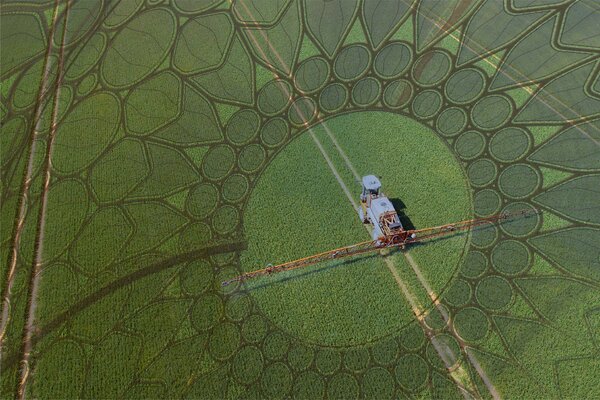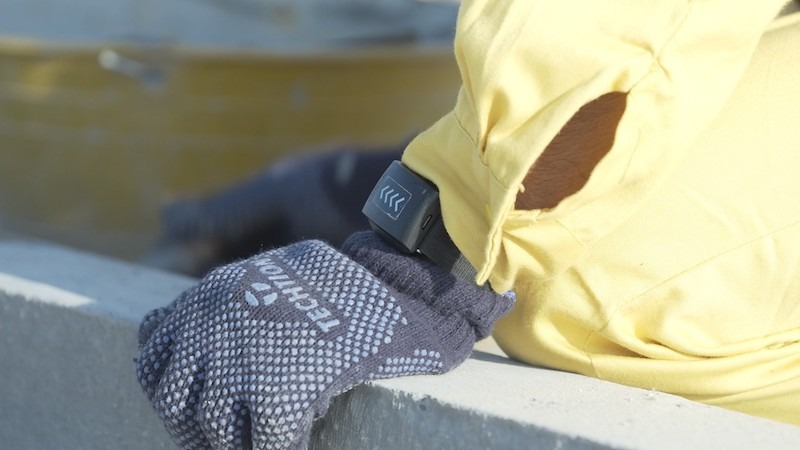The Next Evolution In Smart Cities And Green Building: Focusing On The Performance Of Existing Buildings
Green, Real Estate
July 1, 2018, 10:57 am
At the U.S. Green Building Council (USGBC), we believe that data and performance are the next frontier of green building and an integral component of smart city development. Over the past two decades, data and technology have transformed the market and changed nearly every aspect of life, increasing the rate and ease with which we connect with each other, improving operational performance and creating engagement opportunities through the tracking of data in real-time. This has had a profound impact on sustainability, education, business, healthcare, financial institutions, social engagement, impact investments, innovation, research and productivity around the world.
The advancement of technology and data science is only going to continue to accelerate at a rapid pace, and those who fail to adopt these will be left behind. This is true for the building industry. Today, more than ever, the green building and sustainability movement relies on technology and data, and the next evolution of the marketplace will be focused on performance. It is critical that the market takes on a leadership role in data and performance so we can continue to deliver the smart cities and communities of tomorrow.
USGBC has led the global green building movement for the past 25 years with a simple but powerful vision that buildings, communities and cities will regenerate and sustain the health and vitality of all life within a generation. We work toward achieving these goals through our LEED, or Leadership in Energy and Environmental Design, green building program. Created nearly two decades ago as a way to measure and define green building, LEED provides a framework to create healthy, highly efficient and cost-saving green buildings. It is an internationally recognized symbol of sustainability leadership, signifying that a building is saving energy, resources and water, and is healthier for occupants and the community.
The introduction of LEED helped transform the building sector and contributed to launching the trillion-dollar green building industry and spurring explosive growth in green buildings across the globe. LEED has become the most widely used green building program in the world. Today, there are more than 93,000 projects, totaling nearly 1.84 billion gross square meters of space, participating in LEED across 167 countries and territories – including the United Arab Emirates. Every day, more than 205,800 square meters of space certifies to LEED and it is estimated that millions of people experience a LEED-certified building.
LEED has helped transform building practices and continues to push the top performers. But we recognize that in order to prepare for the future, we can’t leave the other 90+ percent of buildings behind. We must get all buildings on a path to sustainability if we want to achieve a sustainable future for all and realize true market transformation. And we know the way to do that is by focusing on the performance of an often untapped resource: our existing buildings.
Historically, the largest market share for green building has been in the new construction sector in major metropolitan areas worldwide. But when you look at the global real estate portfolio as a whole, new construction is only roughly 2 percent of the overall market. Existing buildings, on the other hand, are by far the largest real estate market and one that is eager to participate in sustainability initiatives.
It’s hard to overstate the potential and necessity of greening our existing building stock. Buildings are responsible for an enormous amount of global energy use, resource consumption and greenhouse gas emissions. According to the UNEP Buildings and Climate Change Report, buildings are responsible for more than 40 percent of global energy use and one-third of global greenhouse gas emissions. Imagine the dent we could we make in these statistics – and the implications this could have for our cities – just by adding efficiency in this sector at an environmental and economic level?
Existing buildings hold incredible promise. Many older buildings are energy hogs and water sieves, but with some keen attention to building operations, this can be turned around drastically. Consider that it can take up to 80 years to make up for the environmental impacts of demolishing an old building and constructing a new one, even if the resulting building is extremely energy efficient.
You may have heard the phrase, “The greenest building is the one already built.” We believe we can maximize the efficiency of existing buildings through a renewed focus on performance. Increasing the transparency around the performance of our existing buildings has the potential to revolutionize the way our buildings, communities and cities are planned, developed and operated, while improving the quality of life of millions around the world and stimulating a robust, green economy.
Over the last several years, USGBC has been focused on performance and how it relates to the green building movement and the development of smart cities and communities. In December of 2016, we introduced an online performance platform called Arc in an effort to take LEED and the green building movement to the next level. Arc helps existing buildings around the world become more resource efficient, sustainable and healthy for their occupants by calculating building performance scores based on global building data and action-oriented strategies across five categories: energy, water, waste, transportation and human experience.
The real estate and building industry thrives on the spirit of compare and compete. As an existing building tracks its performance and makes continuous improvements to become more sustainable, it can eventually achieve LEED certification. Existing buildings in the UAE can benefit from using the Arc platform to pursue certification, thereby vastly increasing the pipeline of possible projects in the Middle East. By focusing on performance, benchmarking and improvements, we can broaden LEED’s reach into the global market and make substantial progress toward our goal of market transformation.
LEED certified buildings can also use Arc to track their building’s performance and confirm they are performing at or above their certified levels. Iconic LEED projects in the UAE can track performance and benchmark against one another. Even buildings not yet ready for certification can track their performance to simply make improvements and increase their sustainability. The platform has total flexibility to start small – with the performance data you already have – and make incremental progress toward achieving your sustainability goals.
So far the Arc platform is tracking more than 92 million square meters of space. We’re seeing substantial progress, with existing buildings all over the world striving to increase their performance and become more sustainable. Take Delhi Metro Rail Corporation in India, which has announced that it will monitor the performance of metro stations in Delhi NCR and other states in India through Arc. This allows their operational transit facilities to benchmark efficiencies, demonstrate continual improvement and reduce their environmental footprint. Their LEED-certified Metro Bhawan headquarters became the first project in the world to pursue and achieve LEED certification by leveraging the new LEED performance pathway through Arc.
The challenges our cities face as they prepare for the future are great and many, but we are determined to meet them. At USGBC, we are fully committed to driving a new way forward for our cities by focusing on the performance of our existing buildings. We are excited about the future because we know city leaders across the globe are ready to meet this challenge and deliver the community and cities of tomorrow. They are relentlessly building toward a future where everyone can thrive.
Photo Credit – http://www.middleeastgreenbuildings.com










